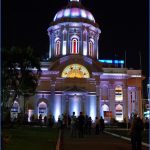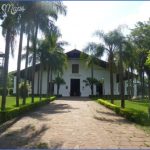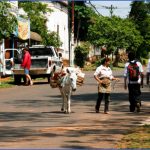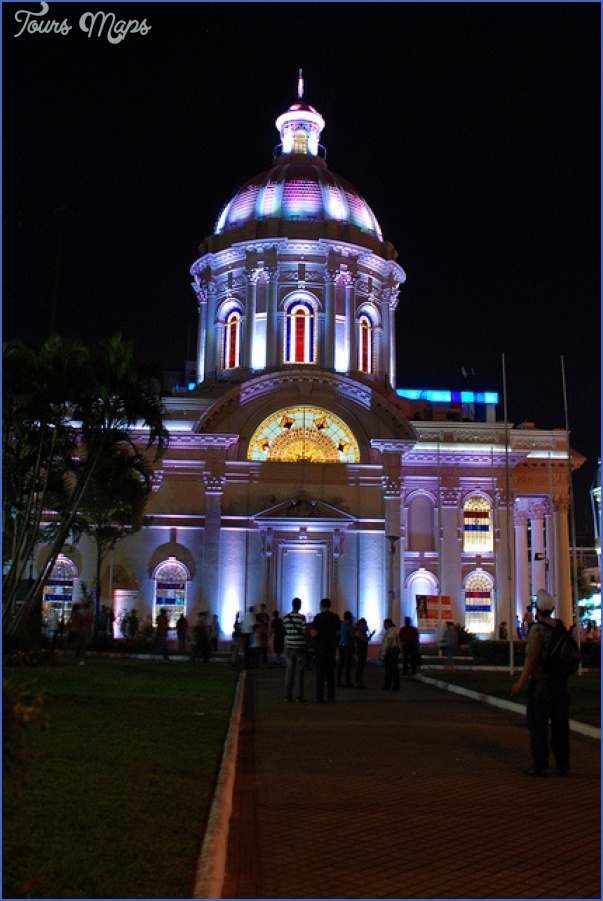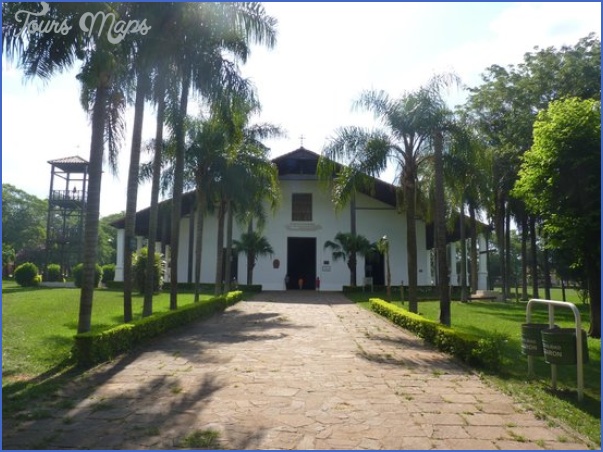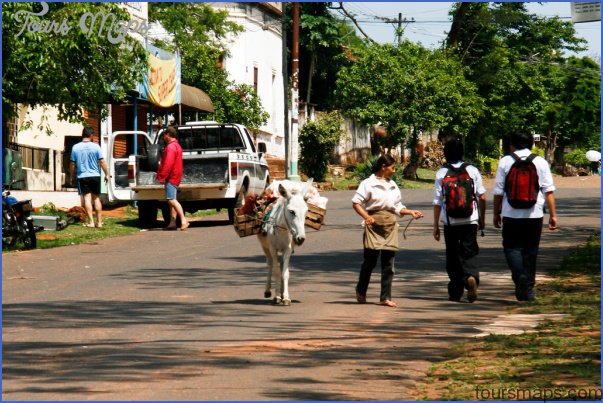Missionary Efforts: The Franciscans & the Jesuits
As with the rest of the New World, evangelizing natives was a key component of colonization. Two missionary groups held a strong influence in Paraguay – the Franciscan Order and the Jesuit Order. Each differed in their level of integration within the colonial system. In many ways, this determined their continued presence in the country. Possibly the most profound impact these orders had on Paraguayan culture was the conservation of the Guarani language, which both groups endeavored to learn and preserve.
The Franciscans arrived soon after the colony’s creation and founded missions throughout Eastern Paraguay. Under the direction of Franciscan priests, the missions’ indigenous inhabitants produced crops such as tobacco, cotton, and yerba mate. Missions had workshops where natives were taught skilled crafts such as weaving, carpentry, ironworking, sewing, sculpture, and painting. The missions were well integrated within the rest of the colonial structure. This proved to be problematic for the missions’ indigenous who were often forced to work for colonial encomiendas.
The convergence of Spanish and indigenous cultures at the hands of the Franciscans is widely credited as the genesis for modern day popular Paraguayan culture – from crafts, to language, to religious beliefs and traditions. Mission towns such as Yaguaron, Atyra, Altos, Tobati, and Ita remain some of Paraguay’s most charming towns. In many of these towns, original buildings from the Franciscan era are still in use. Town churches still contain sculptures, pulpits, altars, and frescoes decorated in the ornate decorative style known as Barroco Franciscano-Guarani (Franciscan-Guarani Baroque). Town artisans still create many of the crafts that originated from the Franciscan missions.
Arriving later, the Jesuits also created similar missions focusing on evangelizing and educating the indigenous. Between 1609 and 1767, the Jesuit Order established a total of thirty missions (also known as reductions) in South America, most of which were located in what are now Paraguay, Brazil, and Argentina. Each mission strove to be self sufficient, trading surpluses with other missions and selling them to the colonists. Among the most important goods produced in Paraguay’s Jesuit missions were yerba mate, hides, cotton, and tobacco. Like the Franciscans, the Jesuits helped the Guarani language thrive through publications written in the native language. A majority of the Jesuit order was made up of highly educated priests who praised the arts and sciences. The mission of San Cosme y Damian was a center for astrological research while that of Santa Maria de Fe was home to an extensive sculpture workshop. The Jesuits instructed their charges in decorative arts (such as sculpture and painting), music and instrument making, and other skilled trades.
Unlike the Franciscans, however, the Jesuits purposefully distanced themselves and their flock from the colonists. The Jesuits sought to safeguard the indigenous on their missions from the brutal conditions of the colonial encomiendas as well as from Brazilian slave traders known as bandeirantes (see Missions Under Attack). Various measures were undertaken to ensure an almost complete separation between the missions and the Spanish colonists. Missions were closed to visitors – non-natives or non-Jesuits were not allowed in without special permission. Even visiting government officials could only remain three days. The Jesuit missions generated a great deal of suspicion and jealousy amongst Paraguay’s elite. Rumors of vast riches coupled with the Jesuit missions’ exemption from colonial taxes provoked resentment from the upper class. In addition, colonists felt the Jesuits were depriving them of a vast source of free indigenous labor. In response to their increasing wealth, power, and their protection of indigenous populations, Spanish King Carlos III expelled the Jesuits from Spain’s colonies in 1767.
The missions subsequently passed into the hands of the Franciscans but were largely abandoned by their indigenous populations, and eventually collapsed. In Paraguay, there are remnants of eight Jesuit missions, testaments of a once vibrant social experiment. The two largest sets of ruins, Santfsima Trinidad del Parana and Jesus de Tavarangue. have been declared UNESCO World Heritage Sites, and the sculptures that adorned the missions can be seen in the churches and museums of Jesuit towns throughout the departments of Misiones and Itapua.
Sidebar: Fray Luis de Bolanos, founder of several Paraguayan Franciscan missions, dedicated himself to learning the Guarani language and was subsequently one of the first Europeans to create a written form of Guarani.
Yaguarón Guide for Tourist Photo Gallery
Maybe You Like Them Too
- The Best Cities To Visit in The World
- World’s 10 Best Places To Visit
- Coolest Countries in the World to Visit
- Travel to Santorini, Greece
- Map of Barbados – Holiday in Barbados

